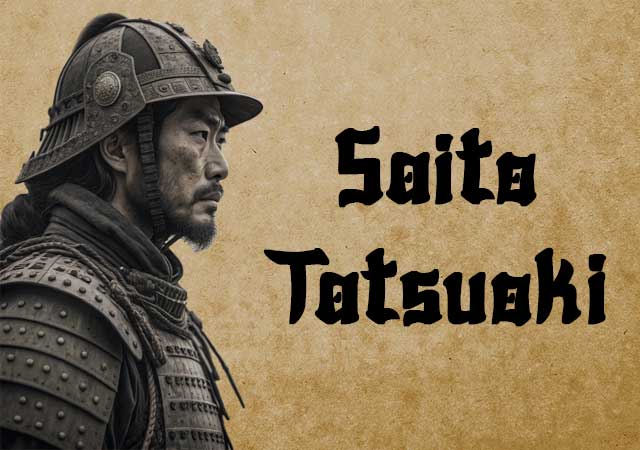
Saito Tatsuoki (6 September 1548 - 1573) was a daimyo of Mino Province during Japan's Sengoku period and the third-generation lord of the Saito clan. He was the son of Saito Yoshitatsu and grandson of Saito Dosan. His mother was a daughter of Azai Hisamasa, making him a nephew of Azai Nagamasa and a relative of Oda Nobunaga's first wife, Nohime, who was also a daughter of Saito Dosan.
Tatsuoki inherited leadership of the Saito clan at the age of 13 following his father's death in 1561. However, he lacked the competence and leadership qualities of his predecessors. His ineffective rule left the Saito clan vulnerable, leading to a fierce rivalry with Oda Nobunaga. In 1567, Tatsuoki suffered a decisive defeat at Nobunaga's hands, effectively marking the end of the Saito clan as a significant power during the Sengoku period.
After Nobunaga's conquest, Tatsuoki fled into exile, with differing accounts describing his escape. In one version, he abandoned his castle the night before Nobunaga's final attack, escaping down the Sunomata River by boat. Another account suggests that after the castle's main gate was breached, Hideyoshi sent a messenger offering leniency in exchange for surrender. Tatsuoki accepted the offer and exited the main tower with his family and retainers under Nobunaga's watch.
Following his escape, Tatsuoki sought refuge in Nagashima, Ise Province, before eventually joining Asakura Yoshikage. His life came to an end at the Battle of Tonezaka in 1573, where he was killed at the age of 25.
See also
-
Nitta Yoshisada

Nitta Yoshisada was a loyal soldier of Emperor Go-Daigo, who in the 1330s attempted to restore direct imperial rule in Japan. The Nitta family was related to the Ashikaga house and was older in lineage. However, they did not join Minamoto Yoritomo at the start of his war with the Taira, as the Ashikaga did, and therefore did not receive high positions in the Kamakura shogunate. This may have been one of the reasons why Yoshisada rose against the Hōjō clan in 1333.
-
Natsume Yoshinobu
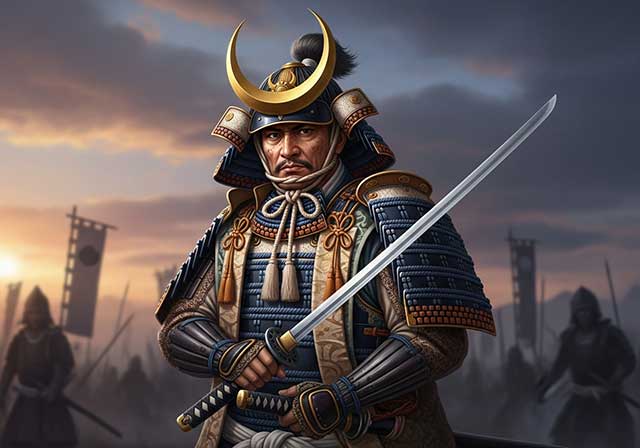
Yoshinobu, a long-time vassal of the Matsudaira and Tokugawa clans, governed Hamamatsu Castle on behalf of the Tokugawa house. During the clashes between the Imagawa, Takeda, and Matsudaira clans, he served in the garrison of Nagasawa Castle and in 1562 took part in raids under the command of Itakura Shigezane. When, in 1563, a revolt of the Sōtō-shū sect followers broke out in Mikawa Province, Yoshinobu joined the rebels together with Honda Masanobu and Hachiya Sadatsugu.
-
Nambu Nobunao
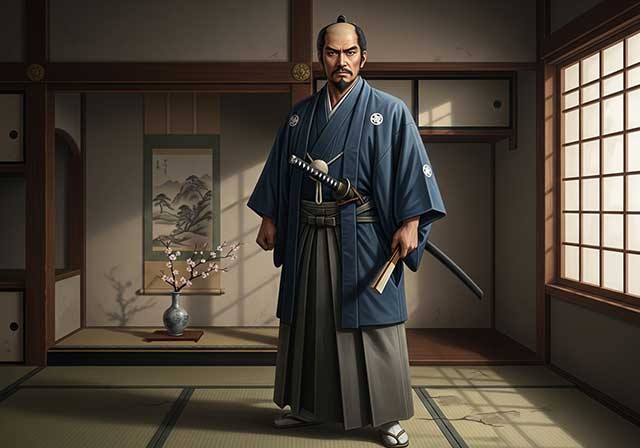
The Nambu clan was an ancient and powerful family that traced its lineage back to the Minamoto shoguns and had controlled a significant part of the Tohoku region in northern Honshu since the 12th century. Nobunao was born in Ikatai Castle, located in what is now the city of Iwate. He was the second son of Ishikawa (Nambu) Takanobu, the 22nd head of the Nambu clan. In 1565, Nobunao’s uncle, Nambu Harumasa, adopted him, brought him to Sannohe Castle, and named him his heir, later giving his daughter in marriage to him.
-
Naito Ienaga
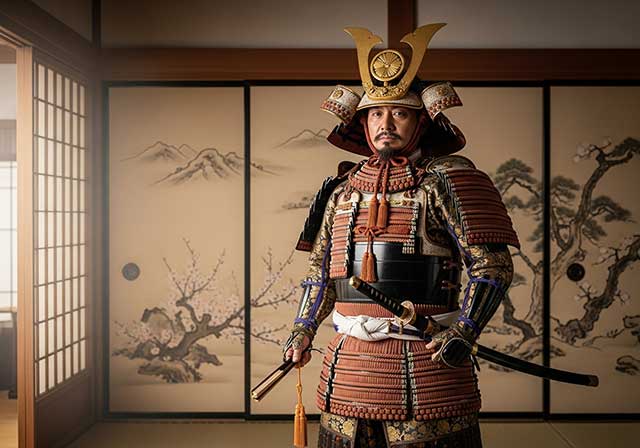
Ienaga was the son of Naitō Kiyonaga and served Tokugawa Ieyasu from an early age. Like his father, he was exceptionally brave, and thanks to his remarkable skill with the bow, he earned the nickname “the unrivaled archer.” Although both the elder and the younger Naitō belonged to the Jōdo Shinshū (“True Pure Land”) sect, during the Ikkō-ikki uprising in Mikawa Province in 1565, Ienaga did not support his fellow believers and instead sided with Tokugawa Ieyasu, earning his special trust. He later took part in the battles of Mikatagahara, Nagashino, and many other engagements while accompanying Ieyasu.
-
Minamoto no Yoshitsune
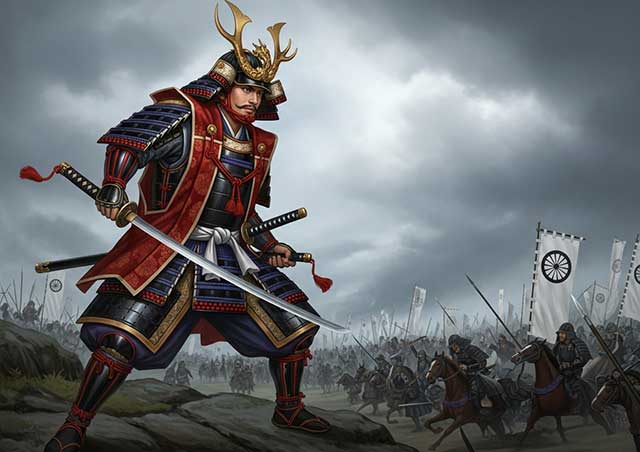
Minamoto no Yoshitsune was the son of Minamoto no Yoshitomo and his second wife, Tokiwa Gozen, as well as the younger half-brother of Minamoto no Yoritomo, the founder of the first shogunate, who had once suffered defeat in the struggle against the Taira clan. Yoshitsune spent his childhood in exile at the Kuramayama Temple. According to legend, he studied not so much Buddhist sutras there as the arts of war. At the age of fifteen, he entered the service of the governor in Mutsu, Fujiwara Hidehira.
-
Miyoshi Chokei
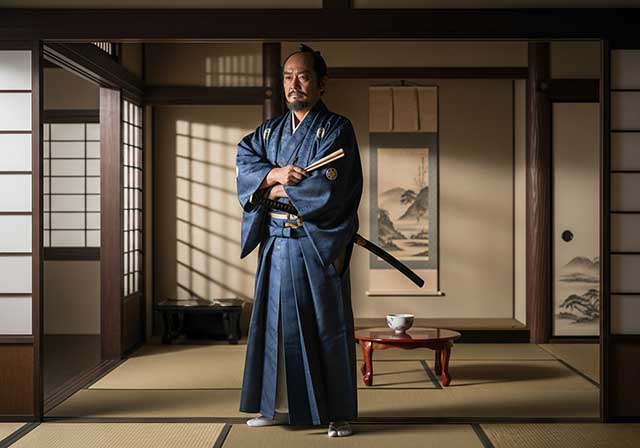
The eldest son of Miyoshi Nagamoto (Motonaga), at the age of seventeen and with the support of Miyoshi Masanaga and Matsunaga Hisahide, invaded Kinai, the inner provinces of Japan, and in 1539 seized control of Kyoto. In 1543 he expelled Hosokawa Ujitsuna from the commercial city of Sakai and appointed his own brother, Sōgo Kazunari, as the city’s new leader. In 1548 he took the name Chōkei. When a conflict arose between him and Masanaga, Chōkei appealed to his liege lord, Hosokawa Harumoto, asking him to raise troops in the provinces of Settsu, Izumi, and Kawachi, but Harumoto instead chose to ally with Masanaga against Chōkei.
-
Matsudaira Ietada
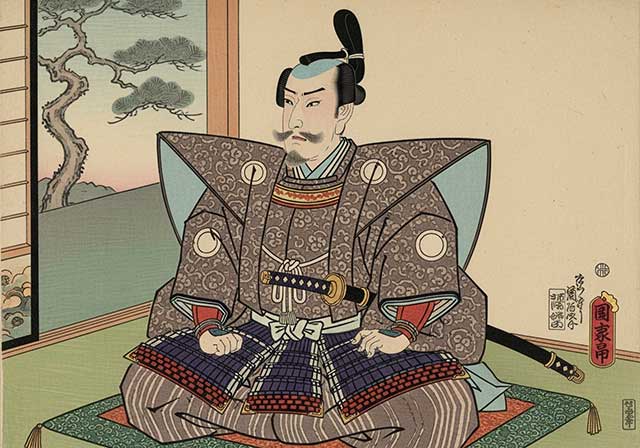
Matsudaira Ietada, also known as Tomomo-no Suke, was the eldest son of Matsudaira Koretada, the head of the Fukozu branch of the Matsudaira clan. Ietada was born in 1555 at Fukozu Castle. When he reached adulthood (for samurai children this age range was between 11 and 17), the Fukozu-Matsudaira clan was under the authority of Tokugawa Ieyasu and commanded by Sakai Tadatsugu. In the Battle of Nagashino in 1575, Tadatsugu’s unit, which included both Ietada and his father, took part in the assault on the fort on Mount Tobigasu-yama. During the fighting, Koretada was killed, and twenty-year-old Ietada became the new head of the clan.
-
Matsudaira Tadaakira
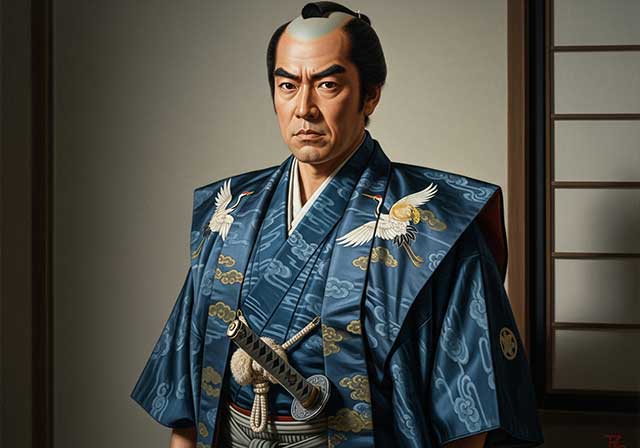
Tadaakira was the fourth son of Okudaira Nobumasa, a vassal of the Tokugawa clan, and his mother was Kame, the eldest daughter of Tokugawa Ieyasu. In 1588, Tadaakira was adopted by Ieyasu and received the Matsudaira family name; at that time, he bore the name Kiyotada.

